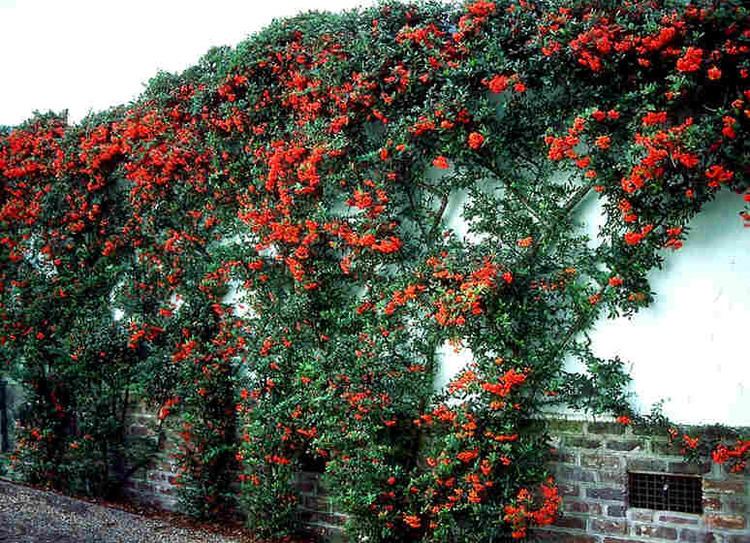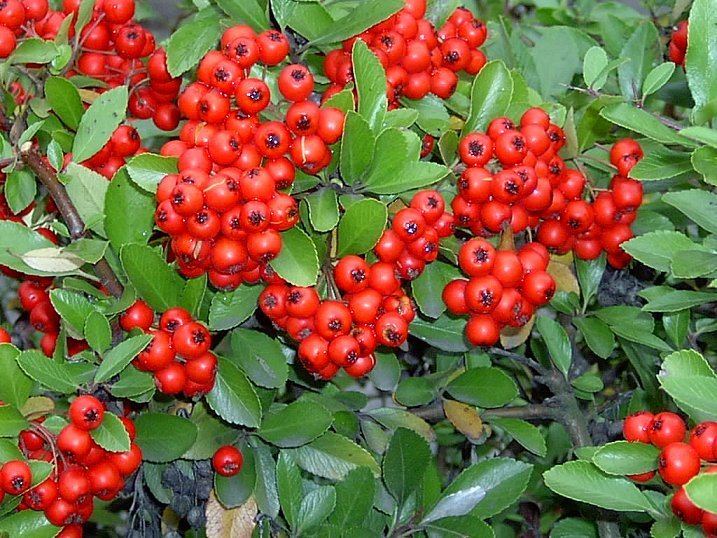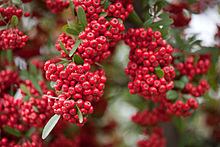Higher classification Malinae | Scientific name Pyracantha Rank Genus | |
 | ||
Lower classifications Pyracantha coccinea, Pyracantha angustifolia, Pyracantha koidzumii, Pyracantha crenulata | ||
Pyracantha
Pyracantha is a genus of large, thorny evergreen shrubs in the family Rosaceae, with common names firethorn or pyracantha. They are native to an area extending from Southwest Europe east to Southeast Asia, resemble and are related to Cotoneaster, but have serrated leaf margins and numerous thorns (Cotoneaster is thornless).
Contents

The plants reach up to 6 m (20 ft) tall. The seven species have white flowers and either red, orange, or yellow berries (technically pomes). The flowers are produced during late spring and early summer; the berries develop from late summer, and mature in late autumn.

Planting pyracantha firethorn out
Species

Cultivars
Selected hybrids and cultivars (those marked agm have gained the Royal Horticultural Society's Award of Garden Merit)
Cultivation

Pyracanthas are valuable ornamental plants, grown in gardens for their decorative flowers and fruit, often very densely borne. Their dense thorny structure makes them particularly valued in situations where an impenetrable barrier is required. The aesthetic characteristics of pyracanthas, in conjunction with their home security qualities, makes them an alternative to artificial fences and walls. They are also good shrubs for a wildlife garden, providing dense cover for roosting and nesting birds, summer flowers for bees and an abundance of berries as a food source.
Berries

Pyracantha berries are mildly poisonous as their seeds contain cyanogenic glycosides (as do apples, plums, cherries, and almonds) and can cause mild gastro-intestinal problems when eaten raw in large quantities; they are edible only when crushed and washed under running water. They have been made into jelly.
Nectar
In the UK and Ireland Pyracantha and the related genus Cotoneaster are valuable sources of nectar when often the bees have little other forage during the June Gap.

